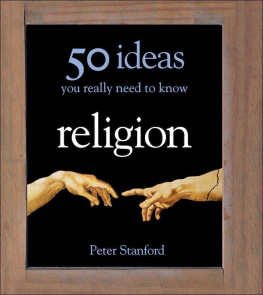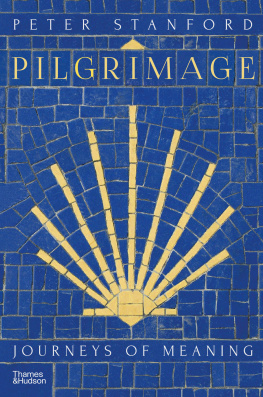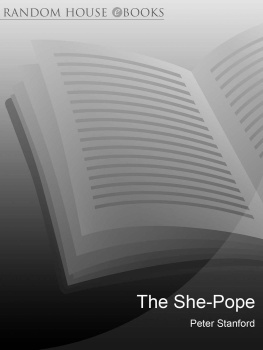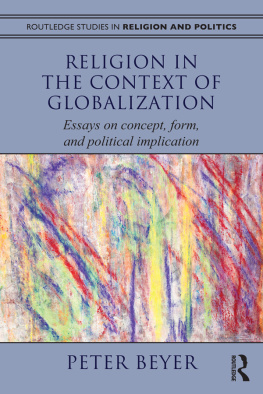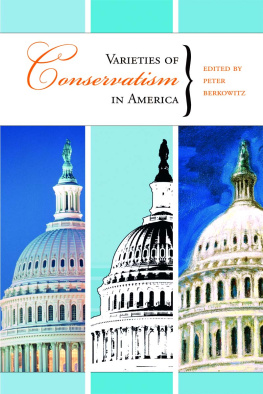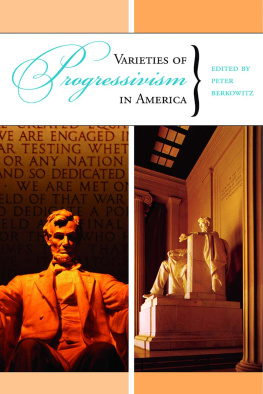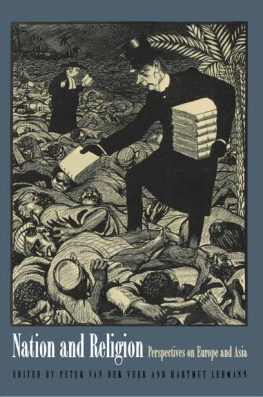Peter Stanford - Religion - 50 Ideas You Really Need to Know
Here you can read online Peter Stanford - Religion - 50 Ideas You Really Need to Know full text of the book (entire story) in english for free. Download pdf and epub, get meaning, cover and reviews about this ebook. City: London, year: 2010, publisher: Quercus, genre: Religion. Description of the work, (preface) as well as reviews are available. Best literature library LitArk.com created for fans of good reading and offers a wide selection of genres:
Romance novel
Science fiction
Adventure
Detective
Science
History
Home and family
Prose
Art
Politics
Computer
Non-fiction
Religion
Business
Children
Humor
Choose a favorite category and find really read worthwhile books. Enjoy immersion in the world of imagination, feel the emotions of the characters or learn something new for yourself, make an fascinating discovery.
- Book:Religion - 50 Ideas You Really Need to Know
- Author:
- Publisher:Quercus
- Genre:
- Year:2010
- City:London
- Rating:4 / 5
- Favourites:Add to favourites
- Your mark:
- 80
- 1
- 2
- 3
- 4
- 5
Religion - 50 Ideas You Really Need to Know: summary, description and annotation
We offer to read an annotation, description, summary or preface (depends on what the author of the book "Religion - 50 Ideas You Really Need to Know" wrote himself). If you haven't found the necessary information about the book — write in the comments, we will try to find it.
Religion - 50 Ideas You Really Need to Know — read online for free the complete book (whole text) full work
Below is the text of the book, divided by pages. System saving the place of the last page read, allows you to conveniently read the book "Religion - 50 Ideas You Really Need to Know" online for free, without having to search again every time where you left off. Put a bookmark, and you can go to the page where you finished reading at any time.
Font size:
Interval:
Bookmark:
ideas
you really need to know
religion

Peter Stanford

First published in 2010
This ebook edition published in 2013 by
Quercus Editions Ltd
55 Baker Street
7th Floor, South Block
London
W1U 8EW
Copyright 2010 Peter Stanford
The moral right of Peter Stanford to be identified as the author of this work has been asserted in accordance with the Copyright, Design and Patents Act, 1988.
All rights reserved. No part of this publication may be reproduced, stored in a retrieval system, or transmitted in any form or by any means, electronic, mechanical, photocopying, recording, or otherwise, without the prior permission in writing of the copyright owner and publisher.
Quercus Editions Ltd hereby exclude all liability to the extent permitted by law for any errors or omissions in this book and for any loss, damage or expense (whether direct or indirect) suffered by a third party relying on any information contained in this book.
A catalogue record of this book is available from the British Library
Ebook ISBN 978 1 84866 059 5
Print ISBN 978 1 84866 076 2
Prepared by Starfish Design, Editorial and Project Management Ltd
You can find this and many other great books at:
www.quercusbooks.co.uk
Contents
COMMON GROUND
CHRISTIANITY
THE REFORMED TRADITION
JUDAISM
ISLAM
EASTERN TRADITIONS
MODERN DILEMMAS
Introduction
Everyone has an opinion about religion. It may be positive; it may be negative, but it is rarely neutral. The German philosopher Friedrich Nietzsche, who announced confidently in the 1880s that God was dead, would be surprised to see, 120 years after he wrote its obituary, that religion is still a vibrant and widely debated presence on the world stage.
This book is an attempt to go back to basics and present a balanced picture of what religion is and isnt, from its origins, through its history and its highs and lows, to what it stands for in the modern world. Polemicists such as Richard Dawkins, whose 2007 book The God Delusion has done so much to feed and embolden anti-religious prejudice, argue that no one can ever present a wholly objective picture of religion. He may well be right, but it has been my constant endeavour throughout what follows to leave my own feelings and denominational attachment to one side so as to present as rounded a picture as possible.
If there is one point about religion that needs to be made over and above all others it is that its various manifestations around the globe have much more in common with each other than they have that divides them. I have started and ended this book by focusing on that shared ground. In between these opening and closing reflections are sections chronicling the range of religions around the world. Each faith is explored in a broadly similar fashion, by following its history and development, and setting out the essentials of what it teaches and how that translates into everyday life. I hope that what follows will be an intriguing voyage of discovery, whether you know nothing of religion or whether you have already explored some of the areas covered and put down roots in one (or even several) of them.
Greater knowledge of this major force that continues to shape our world may also provide the chance to move beyond the stereotypes that dog discussion about religion. My aim is not that you arrive at the end of this journey converted, but simply that you feel better equipped to participate in that ongoing debate.
Peter Stanford
The God-shaped hole
It is the seventeenth-century French philosopher Blaise Pascal who is usually credited with coining the phrase a God-shaped hole to describe the spiritual vacuum inside every human being that yearns to be filled. The concept, however, goes back much further to the very origins of life on this planet. For many people argue that the religious impulse, a deep-seated need to find a more profound meaning to existence, went hand in hand with the birth of humankind.
Sincere religious believers, of course, hold that it was God who came first, creating men and women to populate the Earth. In the beginning was the Word and the Word was with God and the Word was God starts Johns gospel in the New Testament, while the Upanishads, the sacred texts of Hinduism, claim that the Hiranyagarbha, or golden womb, contained the origins of the universe, and of Brahma, the Hindu god of creation.
Others, though, suggest that the process happened the other way round. There have been many theories about the origin of religion. What all of them accept is that human beings have always created gods. So when the first men and women found themselves confronted by the randomness of their fate with sickness and suffering just as likely to afflict them as joy and good health they searched for and discovered an explanation for these otherwise inexplicable turns of fortune by attributing them to the actions of a distant deity.
You have made us for yourself, O Lord, and our heart is restless until it rests in you.
St Augustine, 354430
A more precise starting point for the idea of a man-made God is found 14,000 years ago in the Middle East, where historians and archaeologists have detected evidence that the forces of nature the wind, the sun, the stars as well as less tangible but nonetheless keenly felt entities or spirits believed to exist in the landscape, were personalized and worshipped as gods with human characteristics.
The origin of the idea of God Many historians and theologians have sought to prove that the concept of God originated in the human mind. One of the most influential writers on the subject was the German anthropologist, ethnologist and Catholic priest, Wilhelm Schmidt (18681954), whose twelve-volume The Origin of the Idea of God was first published in 1912. His theory of primitive monotheism held that at the dawn of humankind, man fashioned a benevolent creator god often referred to as the Sky god, since he was thought to reside above the Earth in a region that came to be known as the heavens to provide an explanation for the otherwise inexplicable things, both good and bad, that happened on Earth. This god was so remote from the dilemmas of human life that it seemed pointless to make images of him, or to worship him in rituals led by holy men and women. Alienated by this sensation of distance, people turned instead to more approachable deities, shaped in the image and likeness of humans. According to Schmidt, the cult of the Sky god persisted only among isolated peoples, such as some African and Latin American tribes, and the Aborigines of Australia.A subsequent stage in this process occurred in the centuries between 800 and 300 BCE , known to history as the Axial Age. During this period, the search for meaning in life turned on figures such as Buddha, Socrates, Confucius and Jeremiah, who all shared a view that there was a transcendent or spiritual dimension to existence, and who tried for the first time to formulate that idea. The primitive notion of a deity grew more distinct and refined.
These attempts to define divine overlordship eventually resulted in the various denominations and faiths that are part of the religious world today. While they all still share the common ground of addressing ethical behaviour and the question of how individuals should relate to each other, they differ in how this should be done in other words, what might loosely be termed doctrine. For instance, Christianity, Judaism and Islam are monotheistic religions. This means that they believe in a single all-powerful god. Hinduism and other Eastern faiths, by contrast, have a pantheon of gods.
Next pageFont size:
Interval:
Bookmark:
Similar books «Religion - 50 Ideas You Really Need to Know»
Look at similar books to Religion - 50 Ideas You Really Need to Know. We have selected literature similar in name and meaning in the hope of providing readers with more options to find new, interesting, not yet read works.
Discussion, reviews of the book Religion - 50 Ideas You Really Need to Know and just readers' own opinions. Leave your comments, write what you think about the work, its meaning or the main characters. Specify what exactly you liked and what you didn't like, and why you think so.

